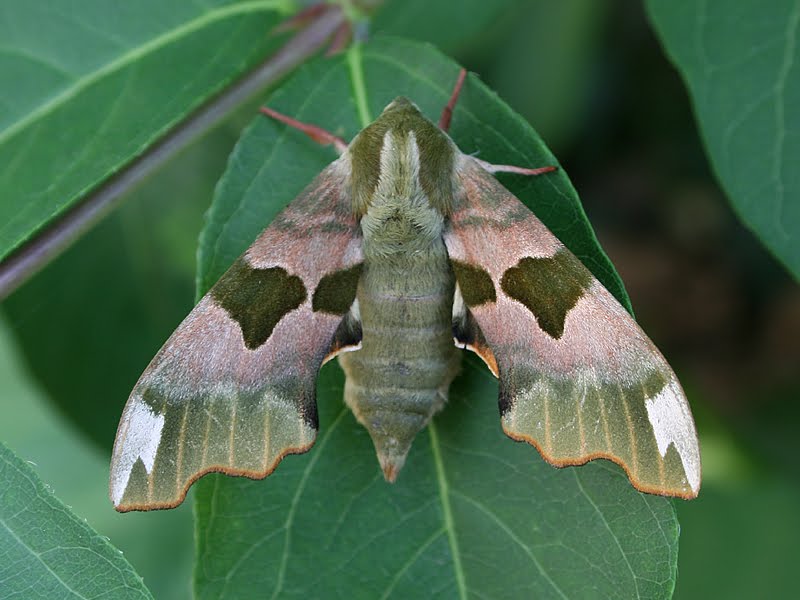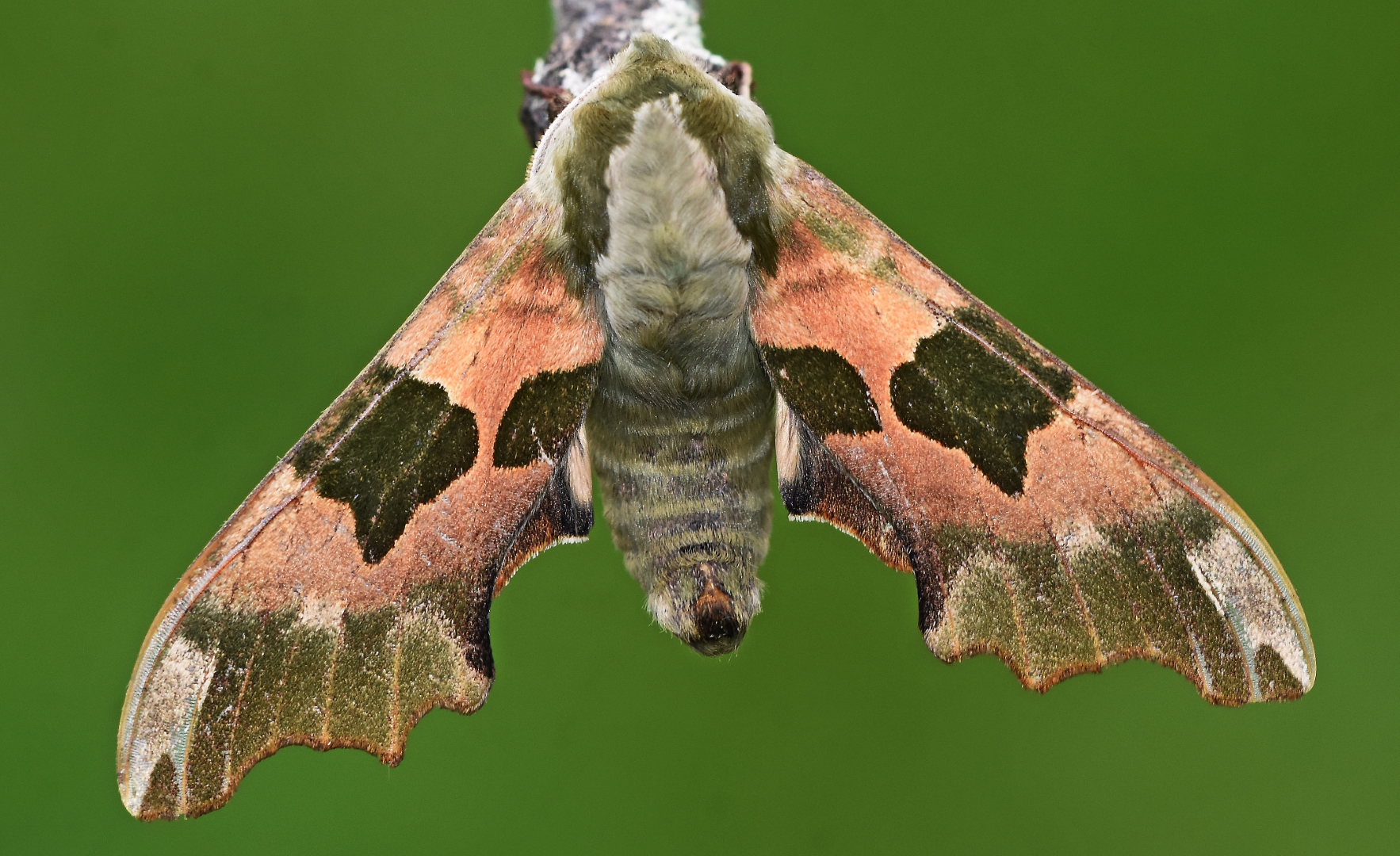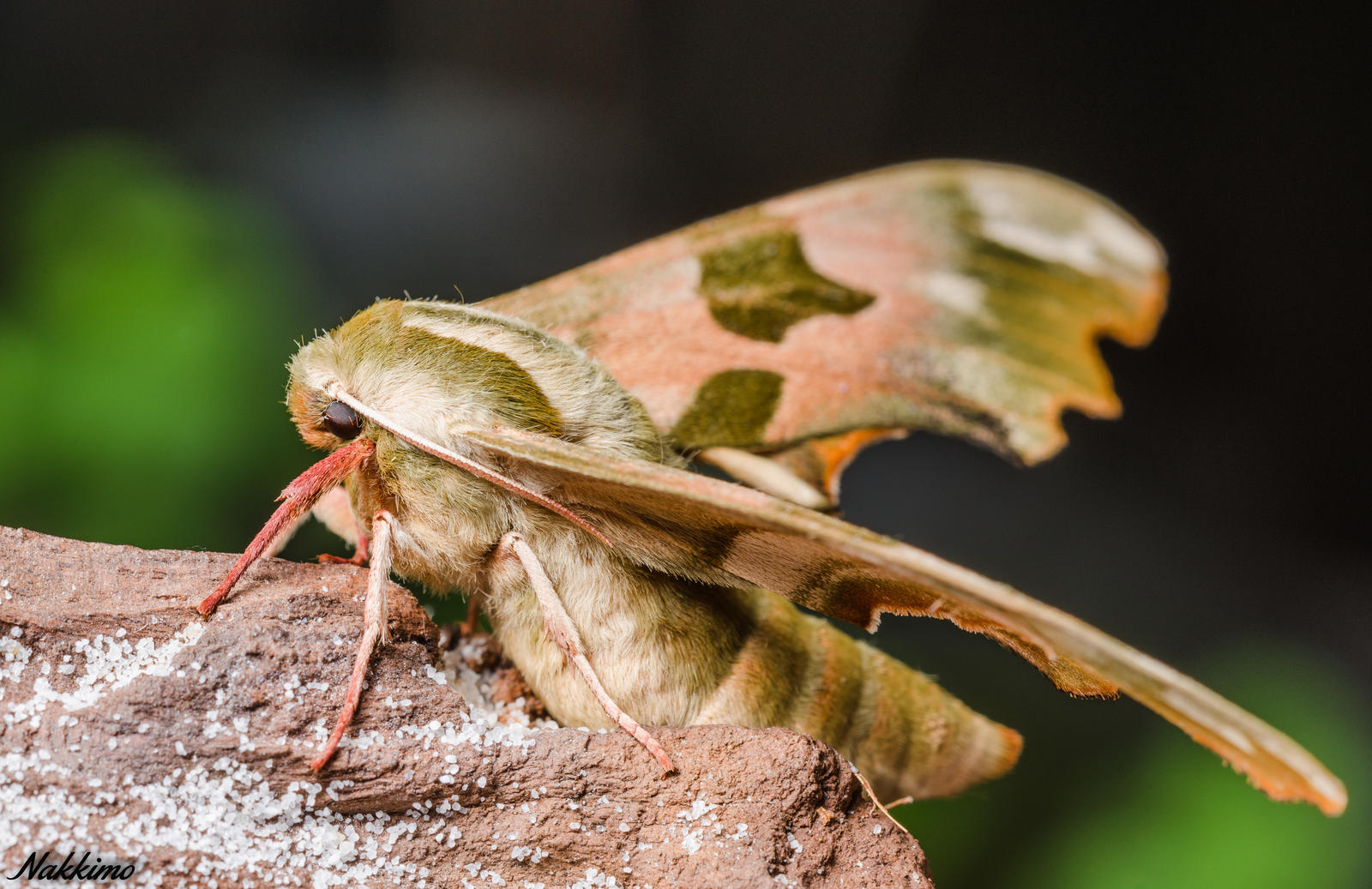
Lime Hawkmoth Butterfly Conservation
The lime hawk moth is a member of the family of hawk moths. Swedish zoologist Carl Linnaeus first described the species in the 10 th edition of his book Systema Naturae in 1758. Lime Hawk Moth candidegardening.com Scientific Classification Description and Identification Caterpillar

Bfb`s Outdoor Ramblings Lime Hawkmoth
Mimas tiliae (lime hawk-moth) is characterised by scalloped edges to the forewing, along with bold green and buff markings, which are thought to disrupt object perception by predators through 'disruptive coloration' ( Stevens et al ., 2006 ).

Lime Hawk Moth
Bee Hawk Moth. The Bee Hawk Moths, Cephonodes spp., are distinctive green, yellow and black striped hawk moths, with a wingspan of about 4 cm. The moths lose the scales on their wings with their first wing flutters giving them the appearance of a large bumble bee. This is emphasised when the moth hovers in front of flowers while feeding.

Lime Hawk Moth, Dorset Butterflies
The lime hawk-moth is a large hawk-moth, on the wing from May to July. It is commonly found in parks and gardens, as well as woodland, but flies only on warm nights. The caterpillars are quite distinctive: large and green, with pale streaks on each segment and a bluish 'horn' at the tail end.

Lime Hawkmoth
The lime hawk-moth (Mimas tiliae) is a medium-sized species with a wingspan of about 3 inches. It's found throughout Europe, Asia, and North Africa. It's found throughout Europe, Asia, and North.

Lime Hawkmoth by nakkimo on DeviantArt
Lime Hawk-moth Mimas tiliae Family: Sphingidae RES: 69.001 B&F: 1979 Verification Grade (Adult): 1 Previous Species Next Species Common and widespread across Kent. This moth takes its English name from the ' tiliae ' (Lime) in the scientific name, due to it being a Lime feeder, but it also feeds on a variety of other tree species.

Lime Hawkmoth Butterfly Conservation
Mimas tiliae, the lime hawk-moth, is a moth of the family Sphingidae. It is found throughout the Palearctic region and the Near East, and has also been identified in Canada's east and western provinces and in northern Spain (Europe). The species was first described by Carl Linnaeus in his 1758 10th edition of Systema Naturae .
Upper Thames Moths Lime hawkmoth
Browse & discover thousands of brands. Read customer reviews & find best sellers. Explore men's & women's new arrivals, shop latest sales & deals, and everyday essentials

The Poor Mouth Lime Hawk Moth
Mimas tiliae (lime hawk-moth) is characterised by scalloped edges to the forewing, along with bold green and buff markings, which are thought to disrupt object perception by predators through 'disruptive coloration' ( Stevens et al ., 2006 ).

Upper Thames Moths Lime Hawkmoths
The Lime Hawkmoth, Mimas tiliae, is a member of the large Sphingidae family of Hawkmoths. It's found in areas of deciduous woodland throughout much of the southern half of England and Europe.

Lime Hawk Hawk moth, Moth, Rare species
The Mimas tiliae, lime hawk-moth, is one of the most popular hawk moths found in the southern parts of England and Europe. The lime hawk-moth caterpillar is typically green with yellow stripes, a blue horn at the back, and brown-colored forewings. Usually, they do not come in human contact.
Barnsley Bird Sightings Carlton Marsh
The hawk moths (Sphing idae) are a mong the largest a nd most . showy of the world 's Lepidoptera. The adu lts are much sought . after by collector s a nd t he la rge la rvae are often encountered .

Daniel´s birdblog Lime Hawk Moth
Pest Control Service. Get Exclusive Deals With GROUPON®. Limited Time Offer.

Lime Hawk Moth Berkshire UK Another bold one I found in my garden
Lime Hawk-moth Mimas tiliae The wing shape, markings and pink and green colour are unlike those of any other Hawk-moth found in the UK. Adults can be seen between May and early July. Often comes to light, but does not feed. Can be found at rest on walls, tree trunks and lime foliage.

Birding with Flowers Lime Hawk Moth
Lime Hawk-moth. Mimas tiliae Sphingidae ABH 69.001 B&F 1979. Widely distributed throughout the county, though absent from inland Exmoor. It appears to be commonest in and around urban areas, perhaps reflecting widespread planting of lime trees. Adult Verification Grade: 1.
Upper Thames Moths Lime hawkmoth
Lime Hawk-moth Mimas tiliae (Linnaeus, 1758) Wingspan 55-70 mm. A reasonably common species in the southern half of Britain, it was most frequent in the London area, where there are still extensive tree-lined avenues. In recent years its distribution has spread northwards and is now regularly found well into North Yorkshire and beyond.